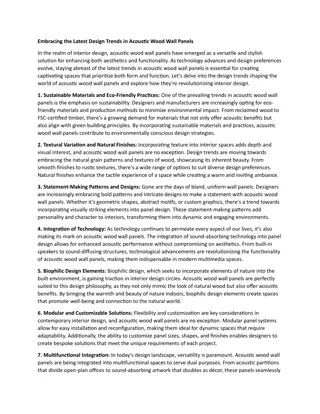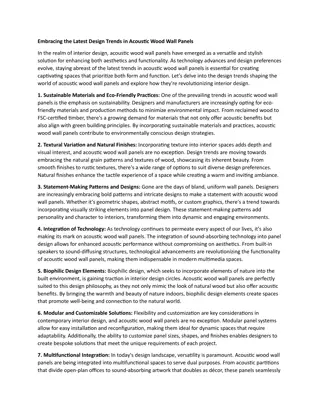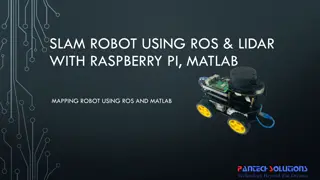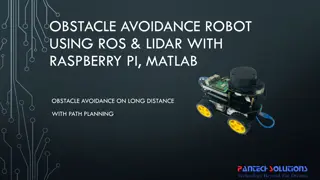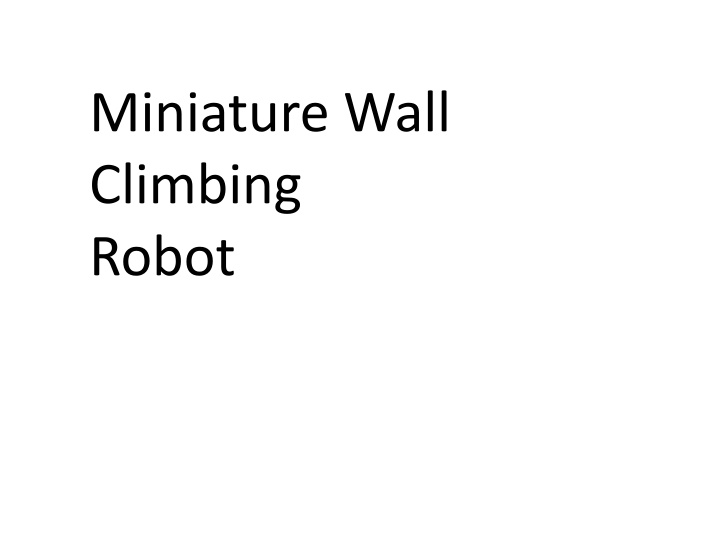
Smart Wall Climbing Robot Technology
Discover the future of miniature wall climbing robots equipped with smart sensors and energy scavenging devices. Learn about the latest advancements in autonomous microrobots designed for various fields including biomedical, aerospace, environmental, and military systems. Explore the innovative design of a small mechanical system for moving on flat and vertical surfaces, collecting data, and making decisions. See how lighter body materials and improved climbing mechanisms have revolutionized smart robotic feet, making robots faster, lighter, and more autonomous.
Download Presentation

Please find below an Image/Link to download the presentation.
The content on the website is provided AS IS for your information and personal use only. It may not be sold, licensed, or shared on other websites without obtaining consent from the author. If you encounter any issues during the download, it is possible that the publisher has removed the file from their server.
You are allowed to download the files provided on this website for personal or commercial use, subject to the condition that they are used lawfully. All files are the property of their respective owners.
The content on the website is provided AS IS for your information and personal use only. It may not be sold, licensed, or shared on other websites without obtaining consent from the author.
E N D
Presentation Transcript
Miniature Wall Climbing Robot
Autonomous microrobots, equipped with smart sensors, actuators and energy scavenging devices are expected to use new walking, rolling, climbing, jumping and flying technique In areas such as biomedical, aerospace, environmental and military systems, walking or climbing autonomous robots are needed.
It is necessary to design a small mechanical system to move on flat and vertical surfaces, to collect data and make decisions in different situations Recently, a smart robot foot based on suction cups and monitoring devices was reported, which has been used in wall-climbing robots.
capable of climbing smooth walls. However, the stainless steel body parts of these wall climbers were relatively heavy and, consequently, a tether was used in most cases of testing. Micro And Nano Technology Laboratory, Department of Electrical and Computer Engineering, Michigan State University
Uses lighter body materials and different walking/climbing mechanisms Substantially improved smart robotic feet (SRF) This new robot is faster, lighter and smaller than earlier robots. The new SRF is equipped with a 40 mm diameter suction cup, a vacuum pump, a pressure sensor and a micro-valve.
The entire system operates by control of a single programmable microcontroller, can be powered by a 6-volt thin cell lithium battery pack mounted onboard, making the robot totally autonomous. The robot has the potential to serve as a base on which to mount data acquisition devices, surveillance equipment, or object- manipulation tools
A suction cup with a 40 mm diameter base is secured in a clamp assembly attached to the underside of the mounting block, creating an airtight seal. A diaphragm-type micro-pump measuring only 27.1 mm 16.9 mm 28 mm is attached to the top of the mounting block, and provides suction in the cup
The robotic frame is primarily made from machined polycarbonate plastic. Polycarbonate exhibits exceptional strength, thermal and electrical properties, and is light weight. The frame s components are joined with various lengths of stainless steel machine screws, and their kinematics enables various walking motions of the robot. Two Hitec HS-311 servo motors drive the robot s movements These are light weight and provide high torque, and precise angular positioning capability
One servo (Servo 1) controls the motion of the legs in a vertical plane Other servo (Servo 2) controls their motion in a horizontal plane. This was found to be the most convenient setup because it enabled both the height and length of each step to be independently controlled. When standing upright, the robot is 108 mm high, 106 mm wide, and 101 mm long
In addition to walking forward, this robot is designed to transit between two perpendicular surfaces e.g. from a floor to a vertical wall - by employing a special kinematic mechanism located on each leg assembly
The robot (Fig. 5) was designed such that both servo motors and both SRFs can be controlled by a single, central circuit board. This configuration was chosen to minimize the number of electronic components, reduce the total weight of the control system, and to make the overall design more compact. The controller and associated electronic components are mounted on a printed circuit board attached to the Top Link behind Servo 2, as shown in Fig. 6.
A recurrent problem when running the robot was the deformation of the polycarbonate frame as it moved. Due to the complexity of the frame design, space tolerances in the multiple joints connecting the members tended to magnify the deformations. Ideally, the robot should be able to walk without the aid of braces mounted behind the suction cups. In the finished robot, however, these braces were found to be necessary, and they improved the robot s walking capability on horizontal and inclined surfaces.
When ascending a near-vertical wall, the moment caused by the weight of the body created deformations in the frame that prevented the cups from squarely contacting the wall and creating suction. Another significant issue noted was the deformations of the suction cups themselves when supporting the robot s weight. One possible remedy for this is to add small braces around the perimeter of the suction cups similar to the guard added to the back of each SRF. This would help hold the standing leg perpendicular to the surface, as well as guide the lowering foot squarely by preventing the cup s edge from catching the surface prematurely.
In the future, a touch, light, or other suitable sensor will be added to the front of the robot to detect the presence of a perpendicular wall. Eventually, a CMOS camera may be mounted on the body to monitor the robot s surroundings, including surface features, texture, or obstacles.

